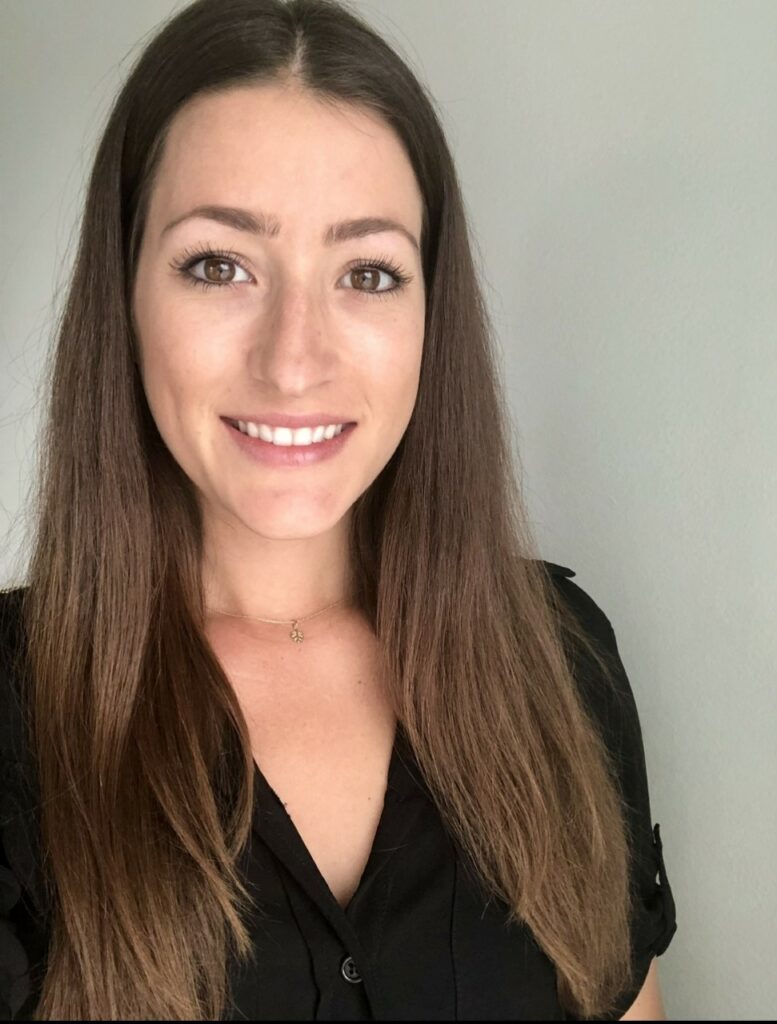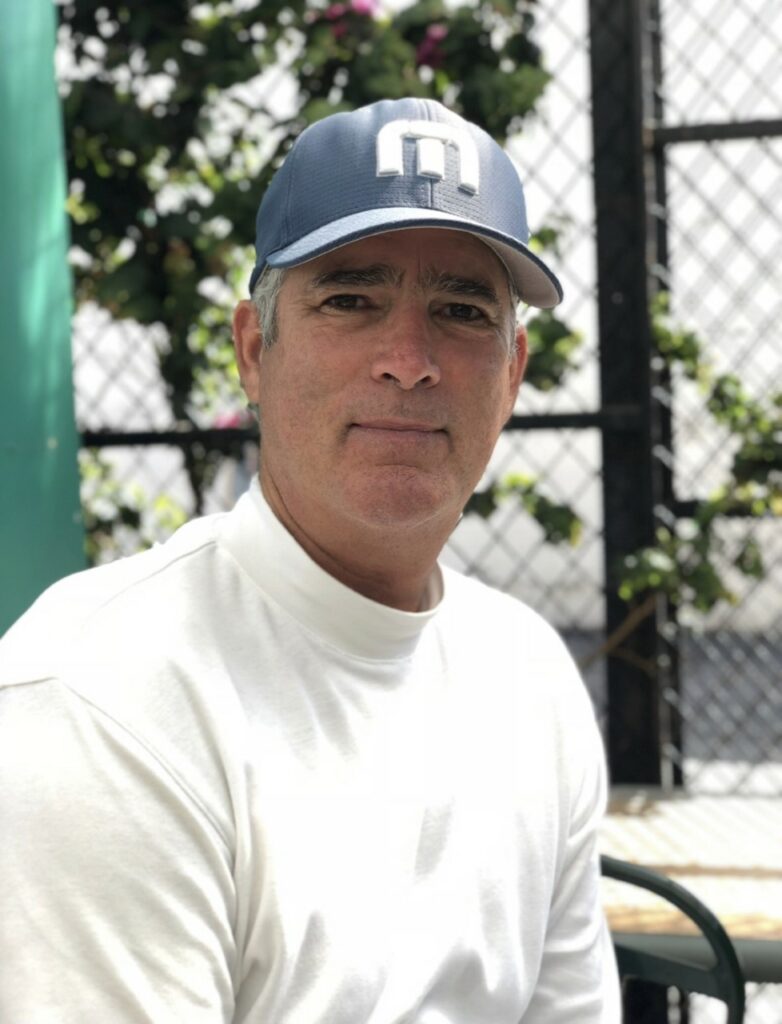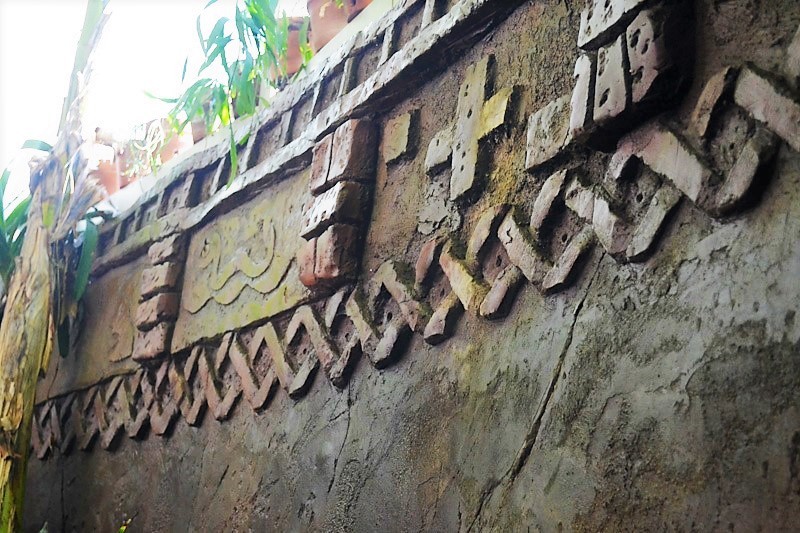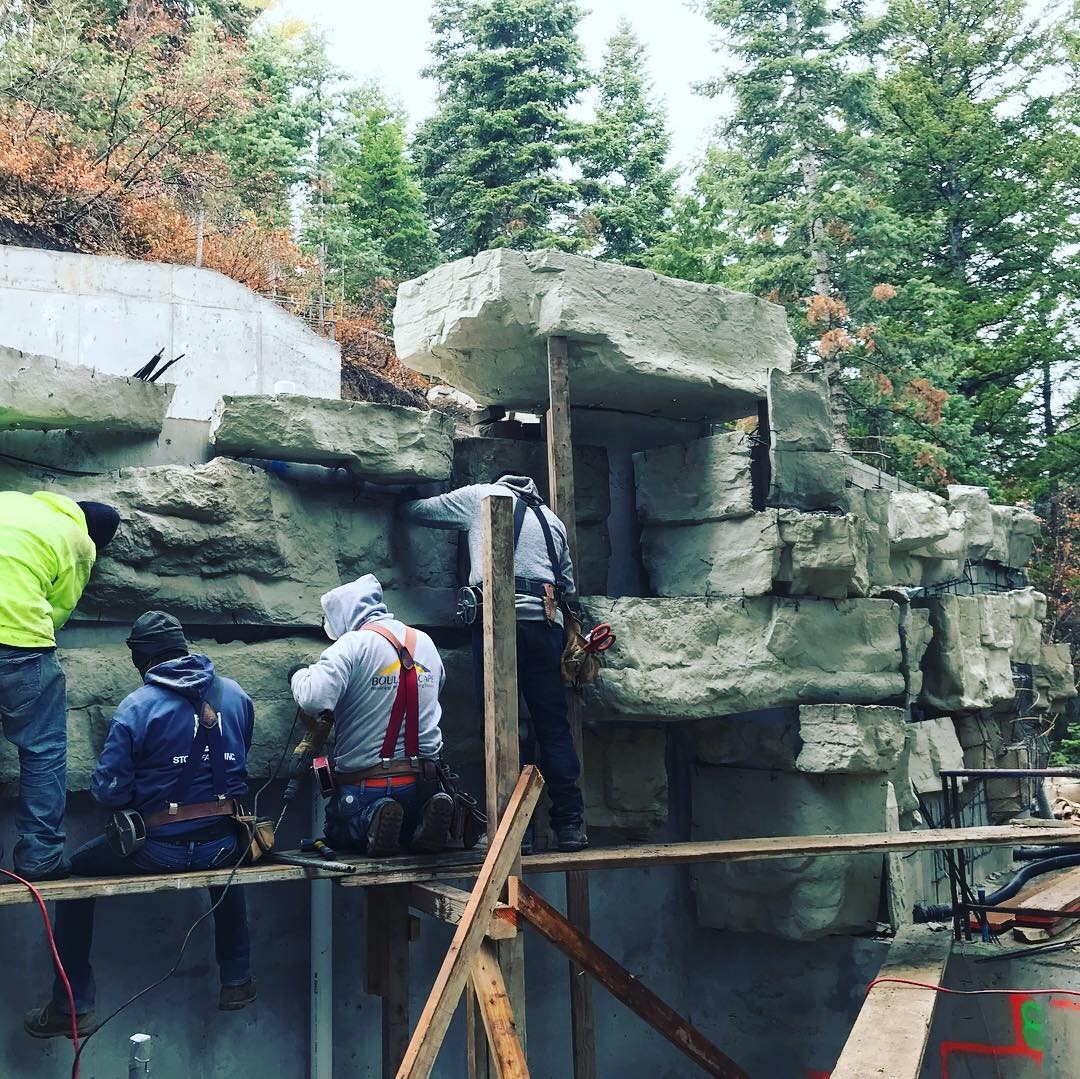
After getting into the artificial rock industry in the 80s Mark Allen founded Stoneface in 2014 and runs it with his daughter, Rachel Ferguson. Based in San Juan Capistrano, California, Stoneface creates custom sculpted concrete projects for theme parks, zoos, aquariums, resorts, residential and other commercial projects. Over the years, clients have included The San Diego Zoo & Safari Park, The LA Zoo, California’s Great America Theme Park, and Knott’s Berry Farm. We asked Rachel about the company and what it takes to create realistic rock work for themed entertainment spaces.
Tell us a little bit about your role and team at Stoneface.

I run Stoneface along with my dad, Mark Allen. As Director of Operations I handle everything from administration, accounting, HR, marketing, sales and project management. Mark also manages sales and project management as well as all design. We are a small, family owned and operated business with an incredibly talented crew that has been with us for decades.
What do you think makes fantastic and realistic rock work?
It is really important to have a talented team when it comes to sculpting any type of rock, wood, or wall finish as this work is literally set in stone. Making it look realistic as far as sculpting and coloring doesn’t come naturally to most people. It really is an art, which is why we call ourselves the Sculpted Rock Artisans. We are lucky to have had the majority of our crew with us for so long as they are truly talented and amazing at what they do.
How much of your work is engineering versus art?
Our work is mostly art, as our projects are custom designed to fit the needs and wants of our clients. Often times our clients have an idea or a basic design, and we will work with them to bring it to life. With his 35+ years of experience Mark is able to add different elements to the design to make it more realistic and artistic. Our projects do get technical and engineering is required in most cases, however we contract with engineering professionals for those services.

Rock work is usually only one component in a landscape or area, at what point do you think you should be brought onto the team and into the design process?
It varies for each project. Often times we are brought in after the general concept of the design is formed and then we will give several design options for them to incorporate into the original design. Other times we are given set design plans to bid on. It really depends on the client and what the project is.
What advice do you have for project owners and designers for how to best incorporate rock work into a design?
We advise the rock work to be as natural as possible. It is recommended to blend the work into the existing landscape. We typically will research the type of rocks in the area, or what they are simulating and will build to look as close to the real thing as possible. Coloring of the sculpted concrete is a big deal; the colors need to blend and not just be one color or one dimension. In order to incorporate the design, we do a lot of stamped concrete decking, rock planters as well as sculpted wall finishes to blend the work into the surrounding areas to make the design and atmosphere seamless and natural. Having foliage throughout the rock is always a great way to make it look and feel real, so we build a lot of planters throughout.
What sort of special considerations do you have to take into account when designing for zoos and aquariums?
When building a home for animals, we consider the safety of the materials used, the comfort the animal needs, what their natural habitat would look and feel like, how they live and move around and how the zookeepers fit into the space. We try to make it feel like the animals are in their element and provide everything they would have in their natural environment. We work closely with curators and zookeepers to make sure we are designing and building the best habitat for the animal.

Outside of entertainment what other markets do you work in?
We do a lot of residential work such as artificial rock around pools, grottos, waterslides, stairs, stamped concrete decking, landscape boulders, climbing walls, wall finishes and artificial ponds and streams. Our commercial work outside of entertainment includes resort pools, and wall finishes for commercial buildings like hospitals, restaurants etc. We do about 50% commercial and 50% residential, but it changes each year depending on what jobs come up.
Are there any recent technology advances that have changed how you work?
The materials and equipment we use are pretty basic as far as technology goes. One of the most important modern developments is GFRC castings, which are precast boulder shells that use fiberglass and concrete. These would be used as an alternative to hand sculpting. There have also been improvements in hydraulic cement and better concrete stains and paints that have been helpful in our work.
How has the company been coping during the pandemic?
We are taking all precautions to keep our crew and clients safe from COVID. Several of our commercial projects have been delayed and are still awaiting rescheduling. Thankfully, the residential side took off last spring/summer and was busier than normal as people were enhancing their backyard oases. We are grateful to have a long list of projects starting early this year that were pushed out from last year.
Are there any projects you’re especially proud of?
Stoneface has done a lot of work at The Living Planet Aquarium in Draper, UT, which is an indoor aquarium. It contains exhibits based on many areas throughout the world. This was a really fun and artistic project that incorporated lots of theming and different types of rock, wall finishes, sculpted trees and more. Dolphinaris in Arizona was another project that was really fun as we did wall finishes, concrete decking and rock work throughout.






